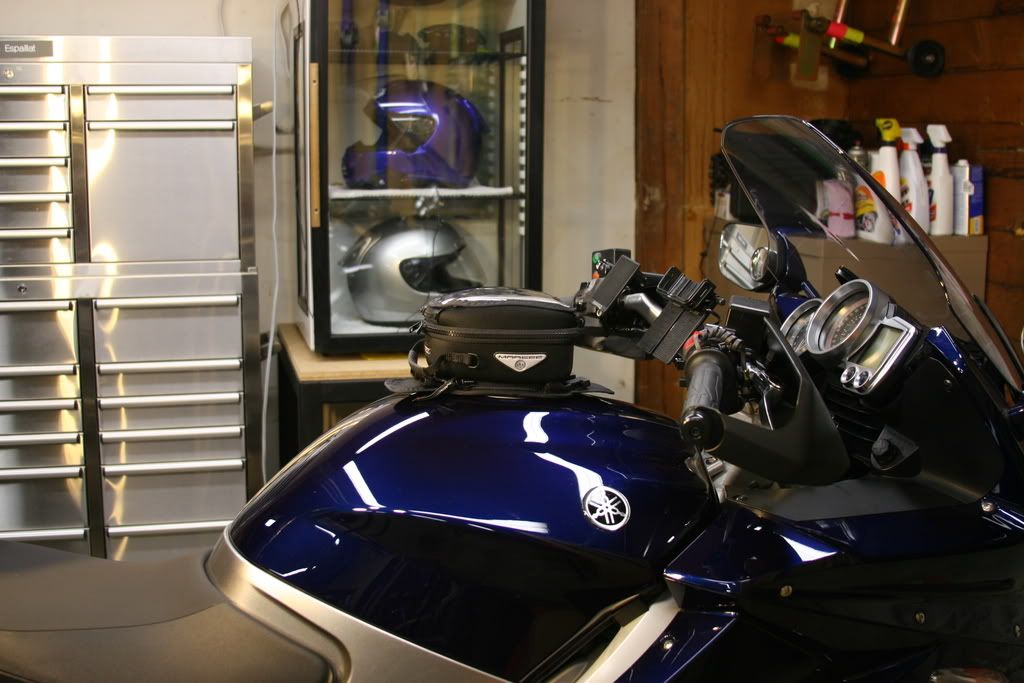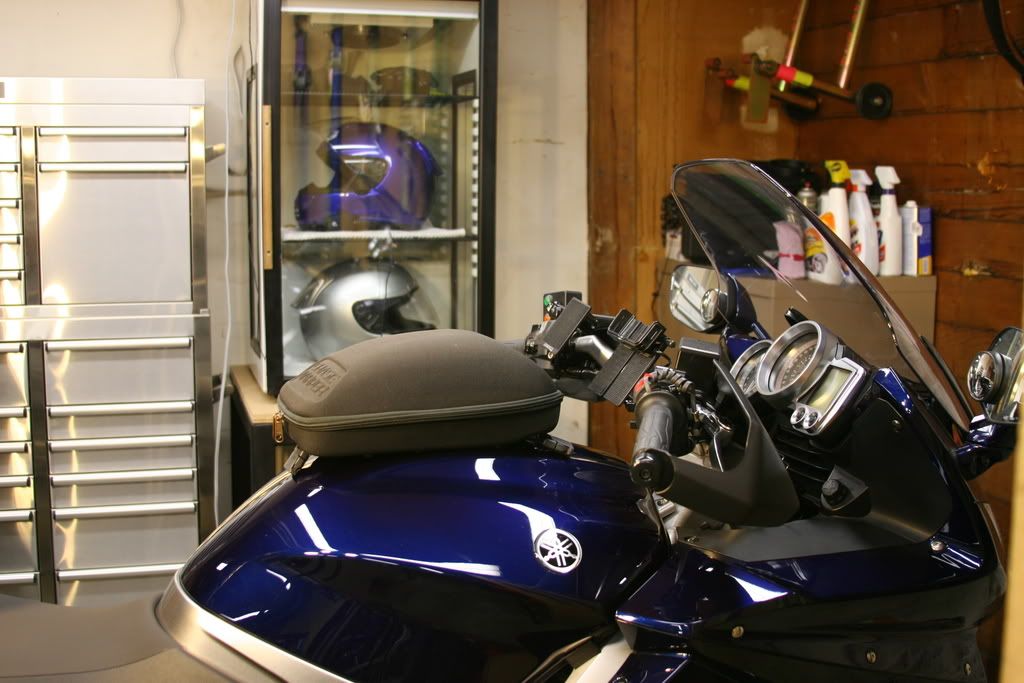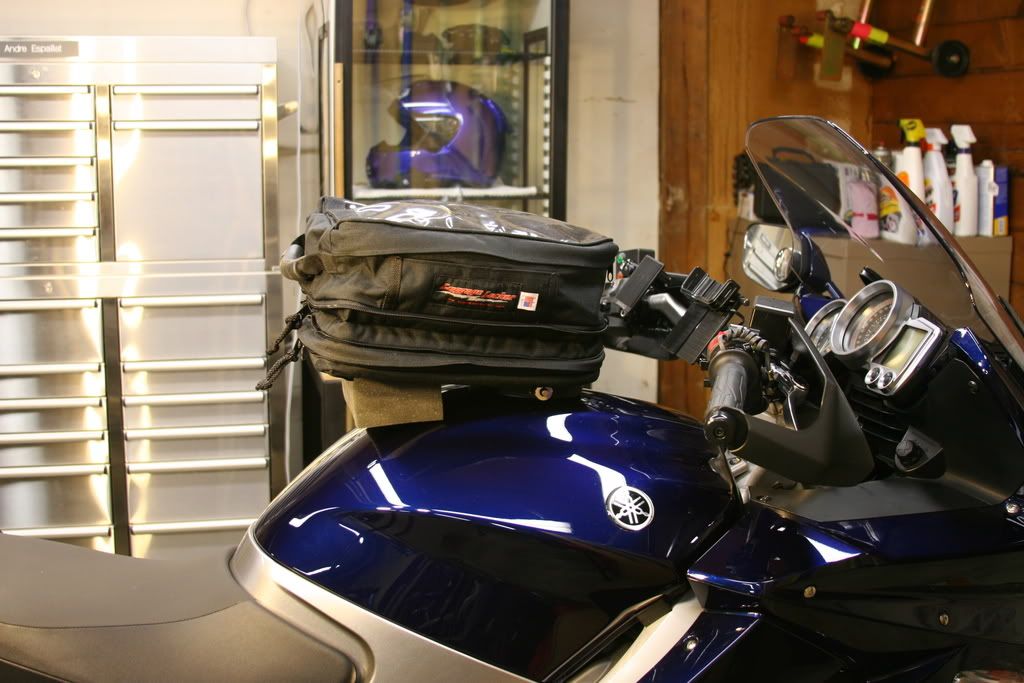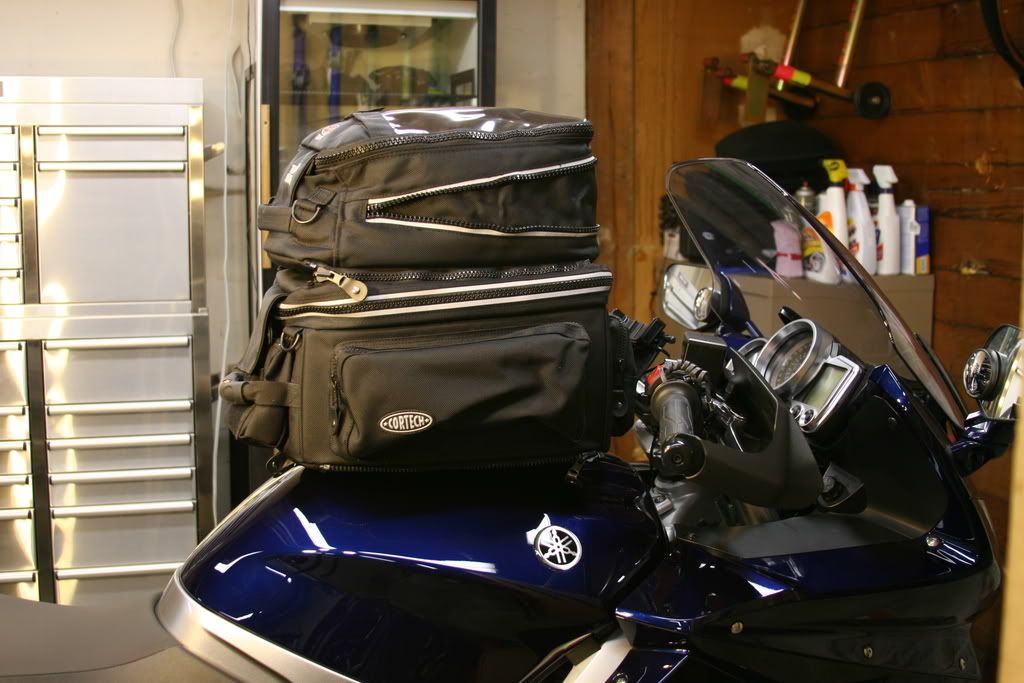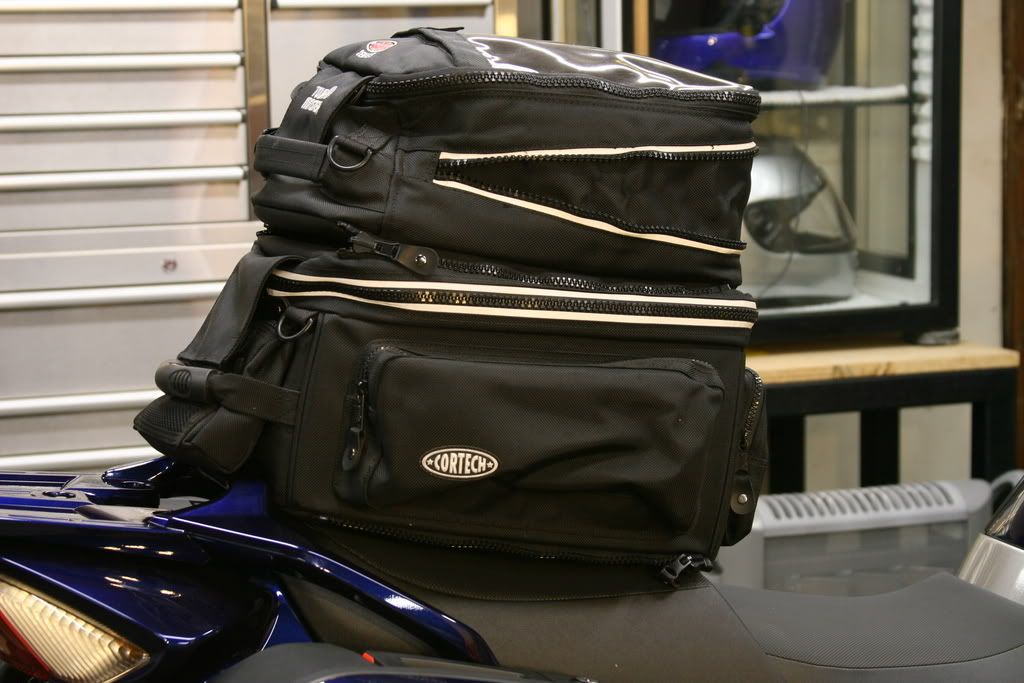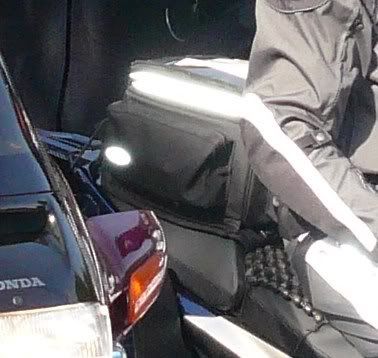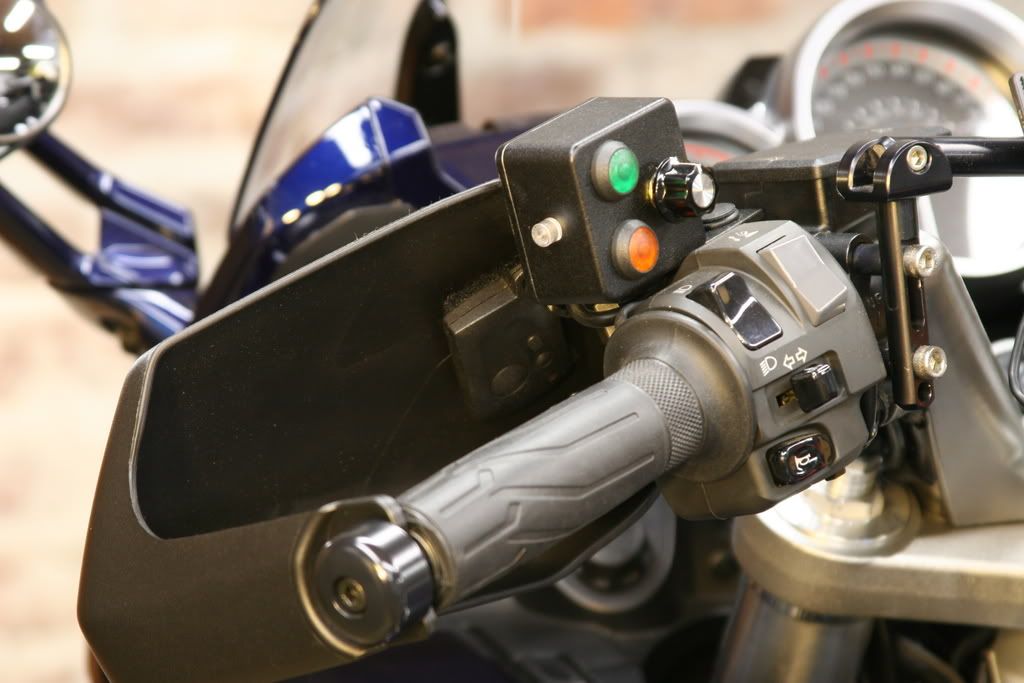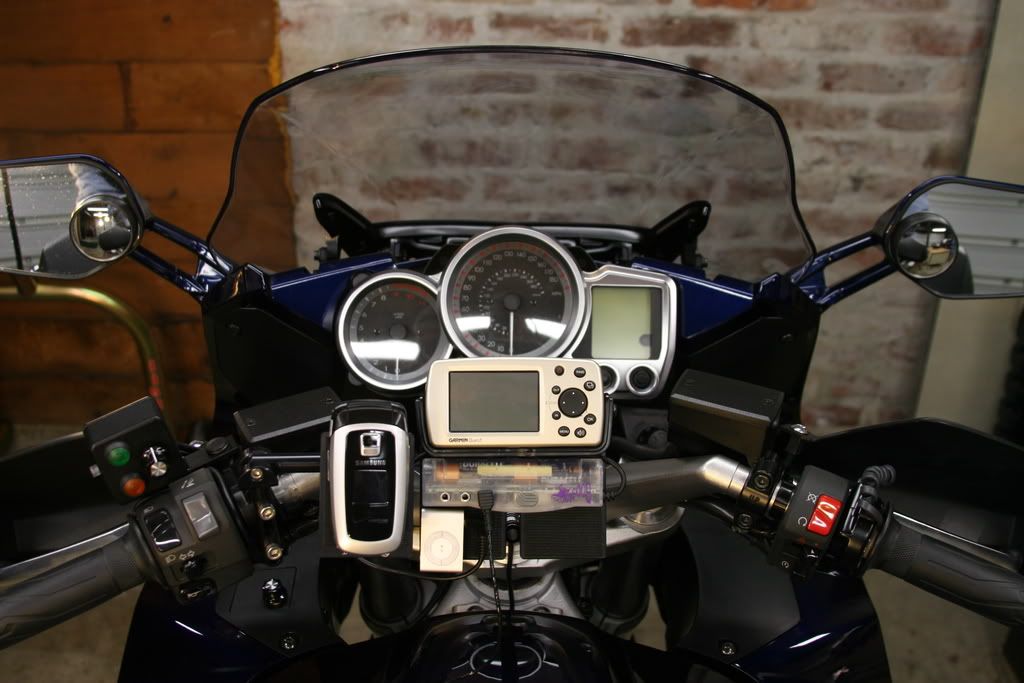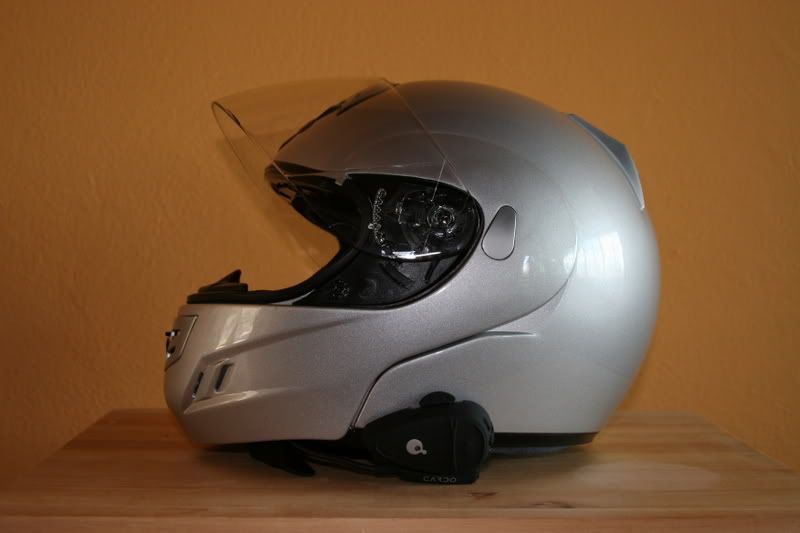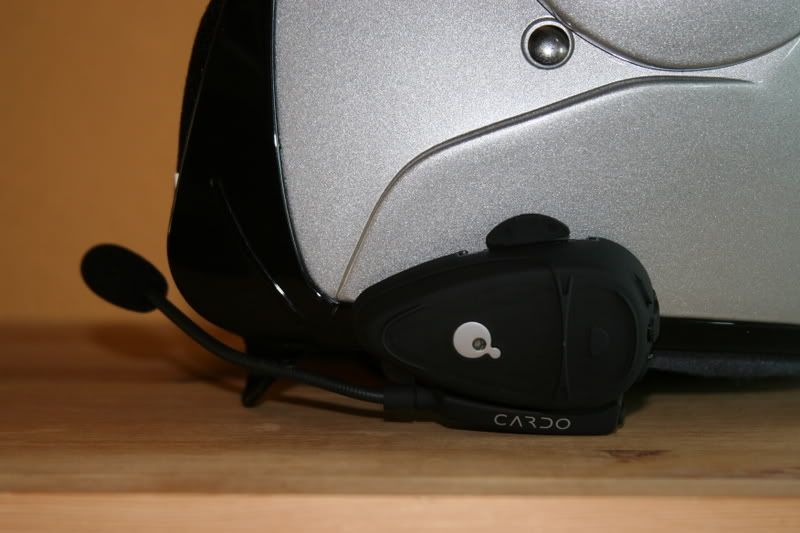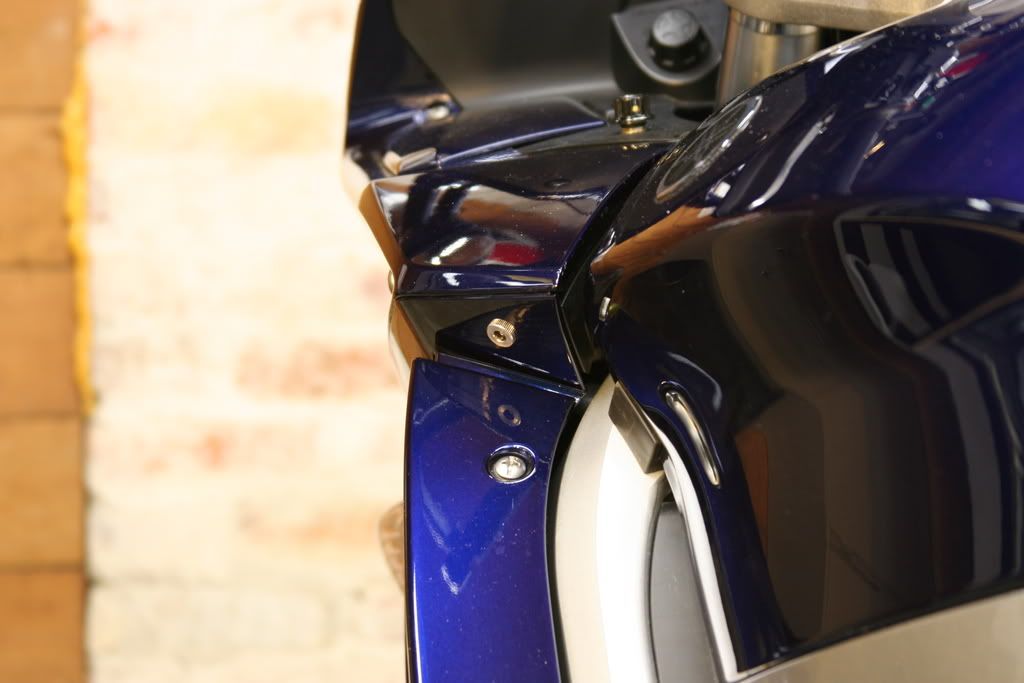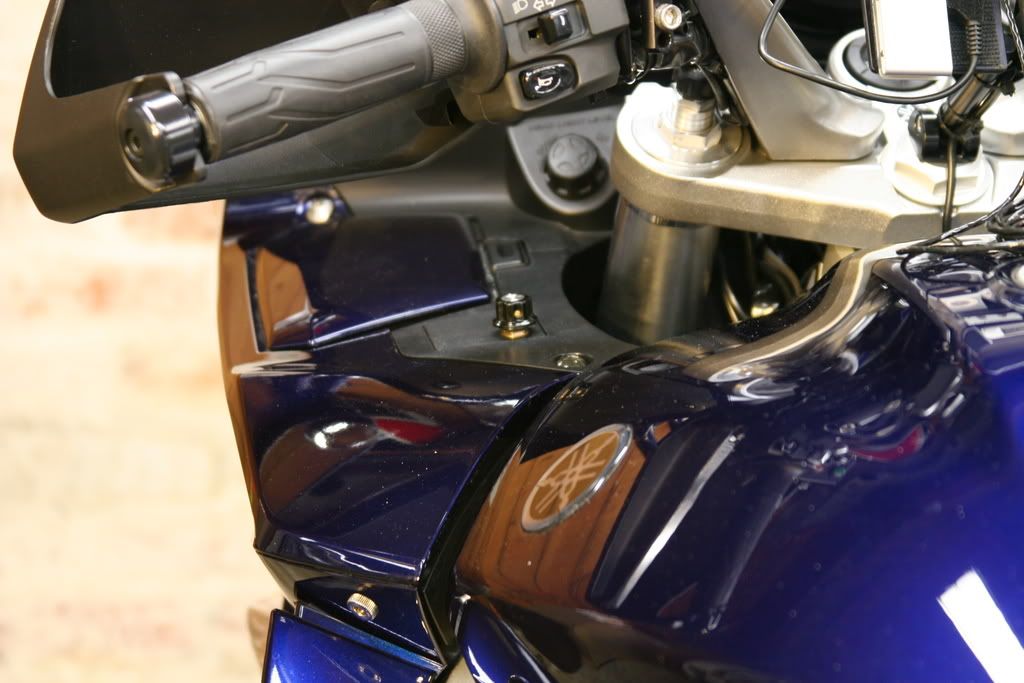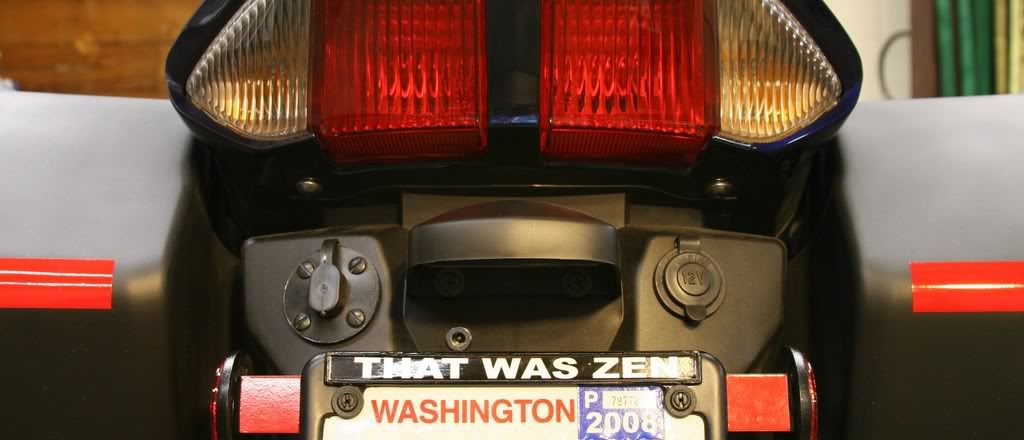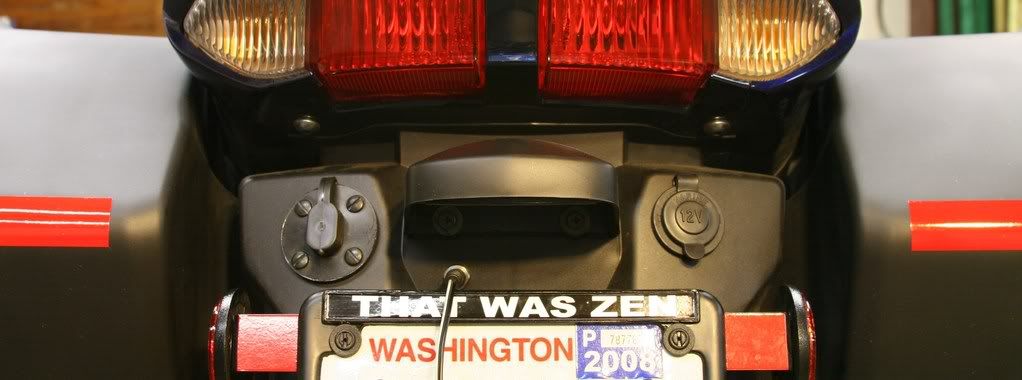I went to Luggage Locker because theirs is the only tank mounting system I've found with a keyed lock built into the product. I intended to mount the case onto their camera mount plate.
Picture of the concept again. Click to make it larger.
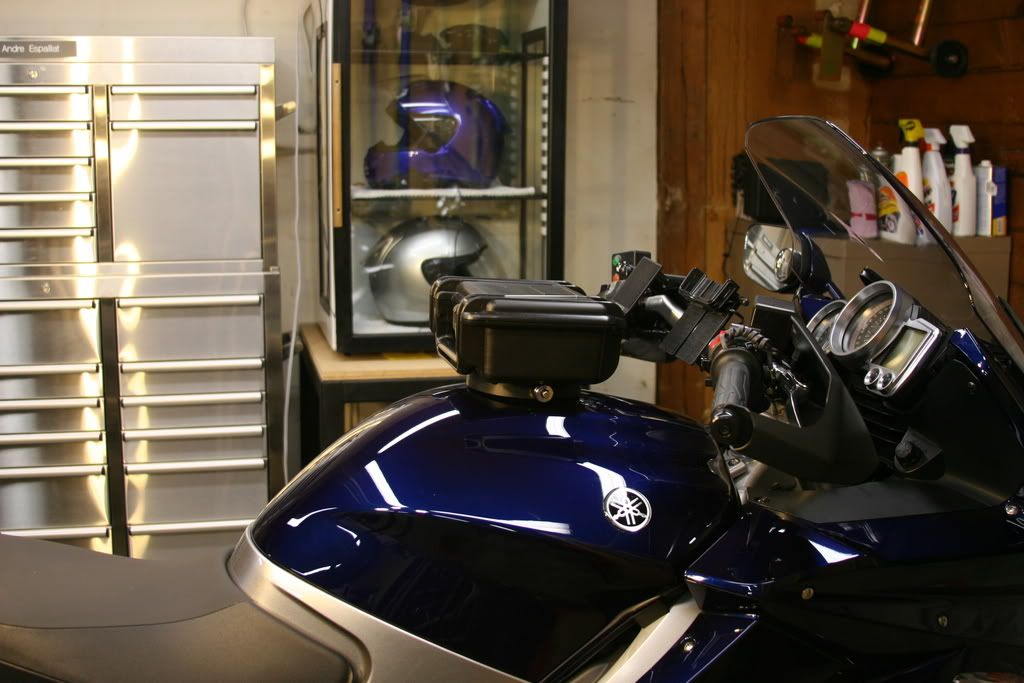
A little history. I bought a used Luggage Locker product from a friend. It was used and inexpensive. The package contained a tank bag, a camera mount kit, and a base plate. The base plate I got was pretty generic and didn't fit my FJR, so I ordered a FJR base plate from Luggage Locker's website. I got confirmation of the order on January 7.
Today is January 30. That's 23 days. Let me tell you what's transpired.
On about January 20th, I emailed Luggage Locker and got the following response:
"I'm headed to the factory either today or tomorrow to pick up a load of bags. Yours should be in that batch,.....". Note: I didn't order a bag. He never looked up my order.
Yesterday, I left a voicemail on his telephone. This morning I got a 2 minute voicemail of excuses. The excuses included:
1) He didn't have a heated workspace.
2) He has about a 6 week period where he can't get product out because of the cold.
3) This is apparently his off season and "most people aren't needing things".
Interesting way to run a business.
Now, he claimed he'd get the product out within the next couple of days, but this was getting ridiculous. It made me wonder seriously about what was supposed to be a relatively simple project.
Then it happened. I went downstairs to re-examine the idea. I looked at the existing mount ring I'd gotten with the used unit. I grabbed the lock with my thumb and forefinger. I pulled and wiggled the lock just once. Nothing difficult, nothing heroic.
The lock came completely out of the mount ring. POIT! No threads, no security pin, no locator of any kind. Apparently it's held in place with some sort of epoxy. The delrin/teflon-esque plastic of the unit doesn't seem compatible with the epoxy. IMO - a less than ideal execution and hardly secure.
Granted, I don't know how old my baseplate is. I don't know how many miles are on it. By the same token, I won't be able to tell when the new one will fail.
I cancelled my order in writing immediately. I cannot recommend the Luggage Locker product or company.
I've elected to use the Twisted Throttle - SW MOTECH baseplate and camera mount sytem instead. I'll figure out how to lock this unit to the FJR and post a new article.
UPDATE re: Twisted Throttle. I ordered the baseplate and camera mount last night online (1/30/08). I've already received UPS confirmation of that the paperwork was done at ~9am PST (1/31/08). Apparently they have inventory and they ship orders.
Notice received that product has shipped at ~2pm PST (1/31/08).
UPS Notice received that product is on time at ~6pm PST (1/31/08). Twisted Throttle seems to work.
2/4/08 - YOU ARE NOT GONNA BELIEVE THIS!
Luggage Locker, aka Rocket Locker, aka Leslie Alderman invoiced and shipped his product to me two days after written cancellation. What kind of business is he running? The product arrived by USPS today with a hand written invoice (off-the-shelf 'statement' stock). Further, the product was wrapped in an old Brooks Brothers bag. This is turning out to be the worst retail transaction I've ever had, and that includes more than 100 eBay transactions.
Yes, I sent him a scathing email. I'll be happy to report how it goes.
Update: Leslie Alderman has emailed me saying he will take care of the problem if I'll send the product back. It gets shipped to him tomorrow (2/6/08) with proof of delivery.
